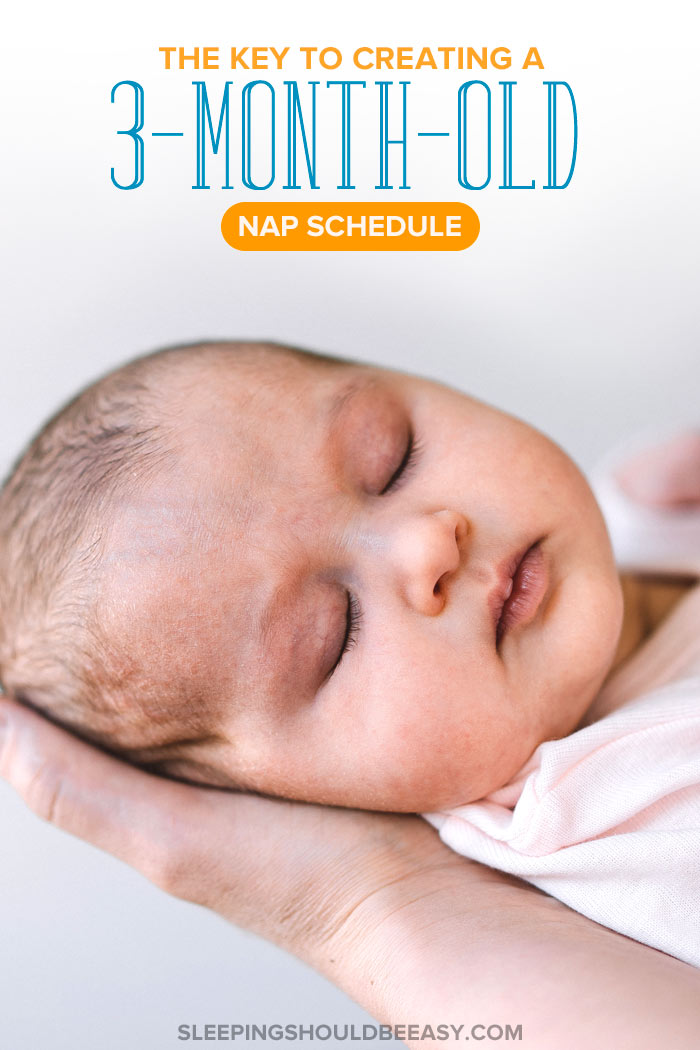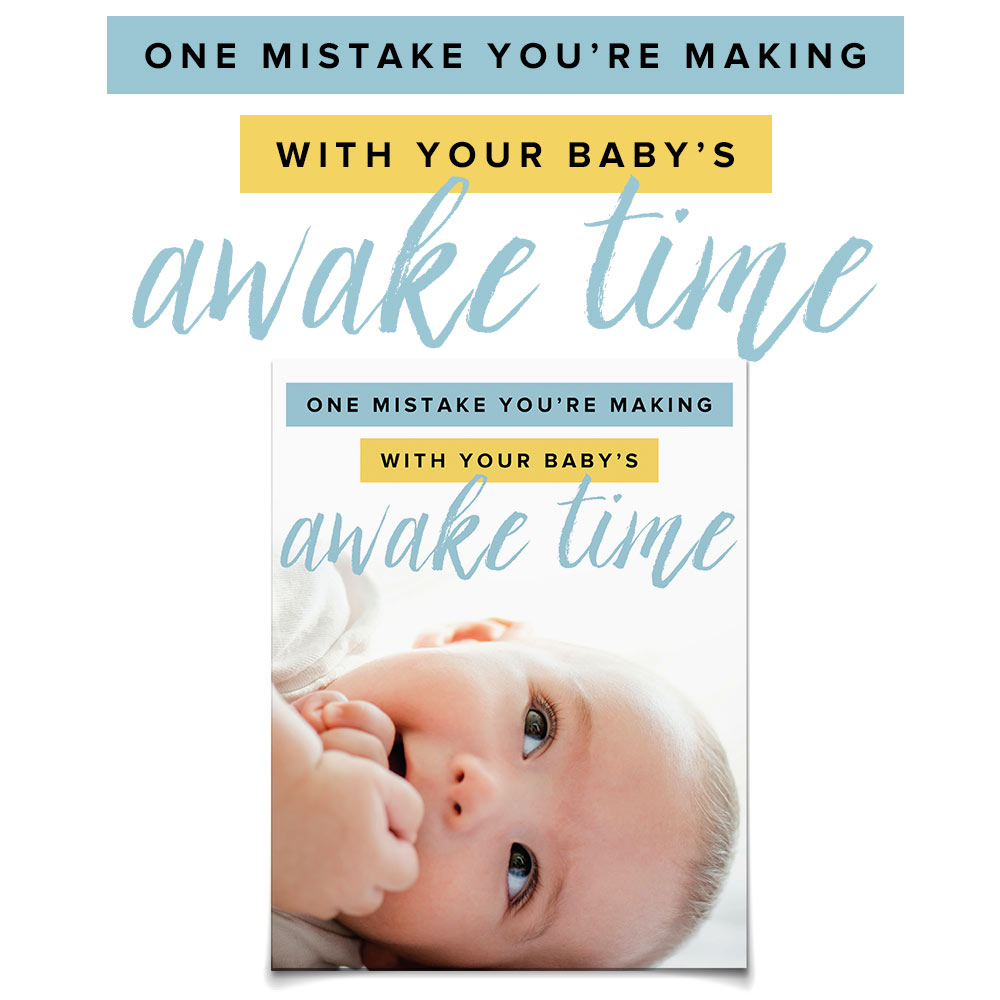The Key to Creating a 3 Month Old Nap Schedule
Learn the key thing about creating a 3 month old nap schedule (hint: It’s not about following the clock) plus best practices to follow.
 Everyone told me, “Don’t worry about a schedule,” or “Newborns don’t follow a routine.” But three months in, I was noticing a few not-so-easy changes in my baby’s sleep.
Everyone told me, “Don’t worry about a schedule,” or “Newborns don’t follow a routine.” But three months in, I was noticing a few not-so-easy changes in my baby’s sleep.
For one thing, he was having a harder time staying asleep (30-40 minutes tops, but 15-minute short naps were the norm). He also napped at random, so any kind of “schedule” seemed impossible. And while I tried to put him on a schedule based on cues, it didn’t work with my feeding schedule.
I was never super strict about schedules, but it would’ve been nice to find some sort of consistency. Should I put him down at certain times? Am I supposed to wake him up from longer naps? After all, in a few weeks, he’d graduate past the newborn stage—at what point was I supposed to start a schedule?
Table of Contents
The key to creating a successful 3 month old nap schedule
Disclosure: This article contains affiliate links. As an Amazon Associate, I earn from qualifying purchases.
By this point, you’ve been through enough to get a sense of your baby’s sleep patterns. But you worry he’s still too young for any formal schedules, much less sleep training, especially those that go by the clock. How can you start giving him a sense of routine without forcing him into one so strict?
Here’s what I learned: follow a rhythm, not the clock.
Because at this stage, he isn’t exactly napping the same amount each time. You might get lucky with a four-hour nap in the morning, only to get a measly 10 minutes the next. Going by the clock—for instance, putting him down at 9am for a nap every day—just doesn’t cut it.
Instead, follow a rhythm to your day, one made up of three patterns:
- eating
- being awake
- sleeping
For instance, offer his first feeding right after he wakes up for the day. Then, allow him to be awake long enough to play, but not so long that he’s overtired. After his awake time, put him down for the first nap. Then, repeat the cycle after that first nap: feed him after he wakes up, give him time to play, and then put him back to sleep.
I first learned this concept from author Tracy Hogg and her book, The Baby Whisperer.
This rhythm allows you to make sure his needs are met without feeling forced to do them at certain times of the day. Whether his nap lasted for 45 minutes or two hours, you’re still following the same rhythm. You’re also encouraging healthy sleep habits by allowing him to fall asleep on his own (instead of always relying on feedings).
You’re only “watching the clock” when you’re making sure he isn’t awake too long.
Best practices for a 3 month old nap schedule
Now that you know that the key to creating a nap schedule is to follow a rhythm, what are a few tips to help you do so?
1. Have a consistent bedtime routine
As varied as your baby’s nap times may be, the one time you should be consistent with is the time he goes to sleep.
Let’s say he tends to sleep around 8pm. Make that his “official” bedtime, so much so that you should fiddle with his last nap so that he can hit that 8pm bedtime. For instance, if he’s been sleeping too long for that last nap, cut it short so he has enough awake time to fall asleep by 8pm.
2. Eating and diaper changes count as awake time
Those 20 minutes it takes for him to feed or change a diaper count as awake time! If you’re watching the clock to see how long he’s been awake, start from when he woke up, including while he eats.
Granted, some of you have shared that feedings can take a long time. First, make sure he’s actually awake and eating while he’s feeding. But if he’s awake and still taking a long time to feed, then experiment with starting his awake time after he’s done feeding (just check that he’s not overtired).
Free resource: Not getting much sleep? His awake time just might be affecting how well he sleeps or not. Join my newsletter and get One Mistake You’re Making with Your Baby’s Awake Time and discover one mistake you may be making with his awake time:
3. Don’t keep your baby awake too long
Since you’re basing his next nap time on how long he’s been awake, don’t get tempted to keep him awake too long (or, for that matter, too short). At 3 months old, the most he should be awake is an hour and 45 minutes.
4. Extend your baby’s sleep cycle
Rely on props to stretch shorter naps into longer ones. For instance:
- Turn on a white noise machine to muffle sudden sounds that could startle him awake.
- Use a pacifier at the tail end of his sleep cycle to encourage him to keep sleeping (tip: give it a gentle “tug” to entice him to suck harder).
- Place him in a bassinet with a swaddle or sleep sack to mimic that snug feeling in the womb.
Conclusion
What schedule? you might’ve scoffed each time someone brought up your 3 month old’s sleep. But as you can see, you can follow a schedule, one based on the rhythm and flow of your his eating, playing, and sleeping patterns.
Feed him after he wakes up, and give him time to be awake for no longer than an hour and 45 minutes. Then, put him down for a nap, stretching it out as long as you can. But regardless of how long he actually slept, his next feeding session starts when he eventually wakes up.
Then repeat, for however often he naps that day.
By following this rhythm, he can begin to learn what to expect next, even at this age. Meanwhile, you’re making sure his needs are met, from feeding to sleeping.
Sure, newborns don’t always follow a schedule, but they can certainly eat, play, and sleep several cycles a day.
Get more tips:
- What to Do When Your 3 Month Old Won’t Nap
- 5 Reasons Your Newborn Wakes Up Screaming
- How to Get Your Baby to Nap in the Crib
- Watch Out for These 7 Baby Tired Signs You Might Be Missing
- 5 Ideas to Help Your Catnapping Baby Sleep Longer
Don’t forget: Join my newsletter and get One Mistake You’re Making with Your Baby’s Awake Time—at no cost to you:



